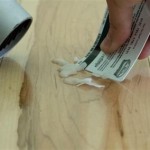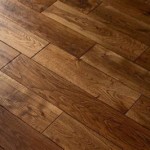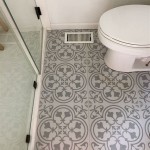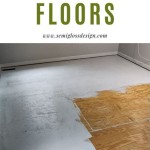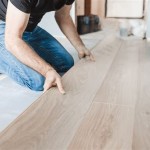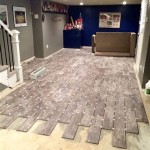How Much Does Replacing Hardwood Floors Cost In San Jose?
Replacing hardwood floors is a significant investment for any homeowner. In San Jose, California, the cost can vary considerably depending on a multitude of factors. Understanding these elements is crucial for budgeting accurately and making informed decisions regarding the type of hardwood, installation methods, and overall project scope. This article provides a comprehensive overview of the costs associated with hardwood floor replacement in San Jose, covering the various factors that influence pricing.
The estimated cost for replacing hardwood floors in San Jose can range from $8 to $25+ per square foot, including both materials and labor. This range reflects the diversity of hardwood options available and the complexities involved in the installation process. A smaller, simple project involving relatively inexpensive materials might fall on the lower end of this spectrum, while a larger project with premium materials and intricate installation could easily exceed the higher end.
Key Point 1: Material Costs
The type of hardwood selected is a primary driver of the overall cost. Hardwood floors can be classified into two main categories: solid hardwood and engineered hardwood. Each category has its own advantages and disadvantages, and varying price points.
Solid hardwood flooring is made from a single piece of wood, typically ¾ inch thick. This type of flooring is known for its durability and longevity. It can be sanded and refinished multiple times, extending its lifespan. Common types of solid hardwood include oak, maple, cherry, and walnut, each with distinct characteristics in terms of grain, color, and hardness. The cost of solid hardwood typically ranges from $5 to $15 per square foot for the materials alone. More exotic species or rarer cuts can command even higher prices. Oak, being a readily available and versatile option, often falls at the lower end of the price range. Walnut and cherry, with their richer tones and more distinctive grain patterns, tend to be more expensive.
Engineered hardwood flooring, on the other hand, consists of multiple layers of wood veneer bonded together with a core of plywood or high-density fiberboard (HDF). The top layer, or veneer, is made of real hardwood, giving it the appearance of solid hardwood. Engineered hardwood is more dimensionally stable than solid hardwood, making it less susceptible to warping or buckling in areas with high moisture or humidity. This makes it a suitable option for basements and other potentially damp locations. The cost of engineered hardwood typically ranges from $3 to $12 per square foot for the materials. The price is influenced by the thickness of the veneer, the quality of the core material, and the species of wood used for the top layer. Engineered options can also mimic exotic wood species at a lower price point than solid planks.
Beyond the type of wood, factors such as the grade and finish also contribute to material costs. Higher grades of wood, with fewer knots and imperfections, will naturally be more expensive. Pre-finished hardwood, which comes with a factory-applied finish, often costs more upfront than unfinished hardwood, which requires sanding and finishing on-site. However, pre-finished floors can save on labor costs, as they eliminate the need for on-site finishing. The choice between pre-finished and unfinished depends on budget, desired aesthetics, and the complexity of the project.
Additionally, the amount of waste generated during installation needs to be considered. Typically, flooring installers recommend adding 5-10% to the total square footage to account for cuts and imperfections. This "waste factor" should be included when calculating the total material cost.
Key Point 2: Labor Costs and Installation Methods
Labor costs constitute a significant portion of the overall expense of replacing hardwood floors. The rate for installation can vary depending on the complexity of the project, the installer's experience, and the prevailing market rates in San Jose. Generally, labor costs range from $3 to $10 per square foot. More intricate installations, such as herringbone patterns or custom borders, will command higher labor charges due to the increased time and skill required.
There are several methods for installing hardwood floors, each with its own cost implications. The most common methods include:
Nail-down/Staple-down: This method is typically used for solid hardwood flooring. The planks are nailed or stapled directly to a wooden subfloor. This method is relatively secure and offers a traditional feel. However, it requires a suitable wooden subfloor and can be more labor-intensive than other methods.
Glue-down: This method involves adhering the hardwood planks directly to the subfloor using a special adhesive. It is often used for engineered hardwood and can provide a very stable and quiet floor. However, the glue-down method requires meticulous surface preparation and the proper adhesive to ensure a strong and lasting bond. Removal of a glued-down floor can also be more challenging and costly down the line.
Floating: This method is commonly used for engineered hardwood flooring. The planks are designed with interlocking edges that "float" over the subfloor without being directly attached to it. A thin underlayment is typically placed between the hardwood and the subfloor for cushioning and sound absorption. The floating method is generally faster and less expensive to install than nail-down or glue-down methods. However, it may not feel as solid underfoot as a nailed or glued floor.
The choice of installation method will depend on the type of hardwood, the condition of the subfloor, and the homeowner's preferences. A professional flooring installer can assess the specific conditions of the project and recommend the most appropriate method.
Preparation of the subfloor is another critical aspect of the installation process. The subfloor must be level, clean, and dry to ensure a successful installation. If the subfloor is uneven or damaged, it may need to be repaired or replaced, which can add to the overall cost. Removing existing flooring, such as carpet or tile, also adds to the labor expense. This removal can sometimes uncover unforeseen issues with the subfloor that require remediation.
Key Point 3: Additional Costs and Considerations
Beyond the material and labor costs, other expenses can influence the total price of replacing hardwood floors in San Jose. These additional costs should be factored into the budget to avoid surprises.
Removal and Disposal: Removing the old flooring and disposing of it can incur costs. The expense depends on the type of flooring being removed and the amount of debris generated. Some installers include removal and disposal in their overall price, while others charge it as a separate item.
Underlayment: As mentioned earlier, underlayment is often used with floating hardwood floors. It provides cushioning, sound absorption, and moisture protection. The type of underlayment selected can affect the overall cost. Some underlayments offer enhanced sound insulation or moisture barriers, which may be desirable in certain situations.
Baseboards and Trim: Replacing or adding new baseboards and trim is often necessary after installing new hardwood floors. This can add to the material and labor costs. The price of baseboards and trim depends on the material (e.g., wood, MDF) and the style.
Furniture Moving: Moving furniture out of the room before installation and back in afterward can be a significant task. Some homeowners choose to handle this themselves, while others hire professional movers. The cost of furniture moving will depend on the amount of furniture and the complexity of the move.
Finishing (for unfinished hardwood): If unfinished hardwood is selected, the cost of sanding, staining, and sealing must be considered. This process requires specialized equipment and expertise. The number of coats of finish applied will also affect the cost. It is usually more cost effective to purchase prefinished hardwood.
Permits: Depending on the scope of the project and local regulations in San Jose, permits may be required. The cost of permits can vary. It's crucial to check with the local building department to determine if permits are necessary.
Contingency Fund: It is always prudent to set aside a contingency fund to cover unexpected costs that may arise during the project. Common unforeseen issues include subfloor repairs, hidden damage, or changes to the scope of work. A contingency fund of 5-10% of the total project cost is recommended.
Finally, geographical location within San Jose can influence the cost of hardwood floor replacement. Installers in areas with higher living costs may charge higher rates. Transportation costs for materials and labor may also vary depending on the distance from the supplier to the project site. Gathering multiple quotes from local flooring contractors is essential to understand the prevailing market rates in the specific neighborhood.
In conclusion, determining the cost of replacing hardwood floors in San Jose requires careful consideration of various factors. From the type of hardwood selected and the installation method employed to the additional costs associated with subfloor preparation, removal, and finishing, each element plays a role in the overall expense. By thoroughly researching these factors and obtaining detailed quotes from reputable flooring contractors, homeowners can make well-informed decisions and ensure a successful and cost-effective hardwood floor replacement project.

How Much Does Hardwood Flooring Cost 2025

How Much Does Hardwood Flooring Cost 2025

How Much Does Flooring Installation Cost 2025

How Much Does Hardwood Flooring Cost 2025

How Much Does It Cost To Repair Floors 2025

How Much Does Engineered Hardwood Flooring Cost 2025

Top 10 Best Hardwood Floor Installation In San Jose Ca Updated 2025 Yelp

Hardwood Floor Refinishing San Jose Campbell Slaughterbeck Floors

Hardwood Floor Refinishing San Jose Campbell Slaughterbeck Floors

Hardwood Floor Refinishing San Jose Campbell Slaughterbeck Floors
See Also
